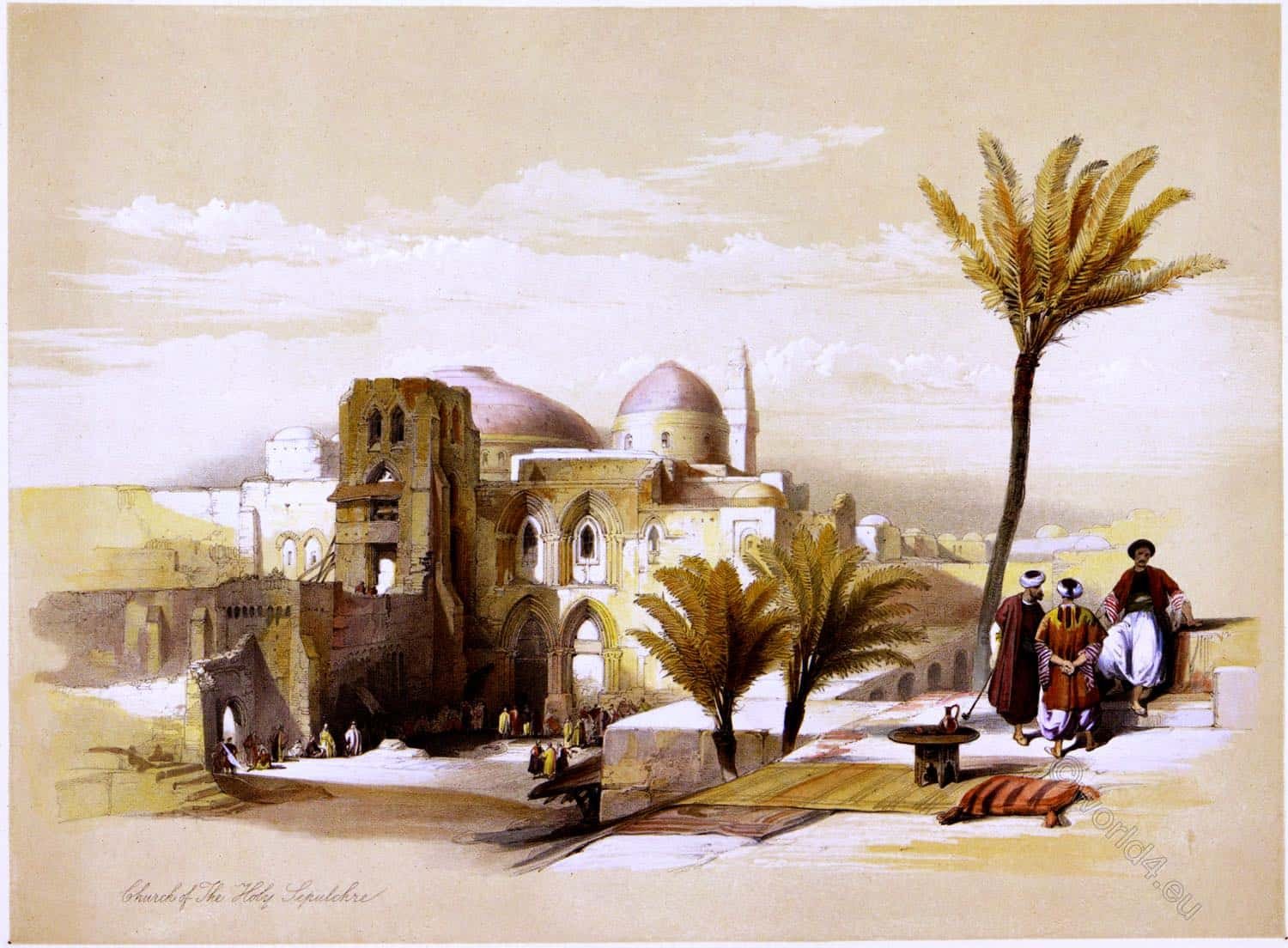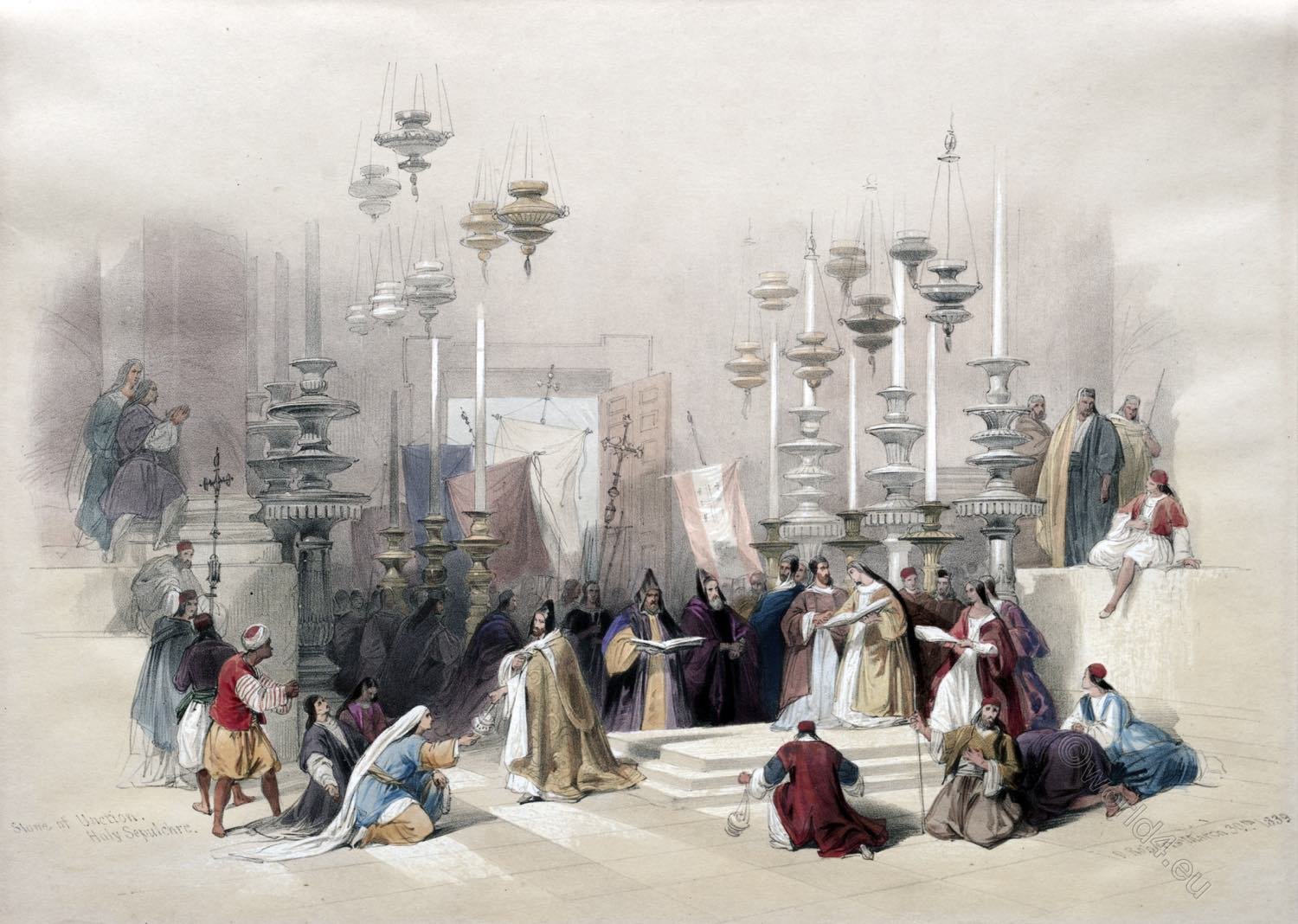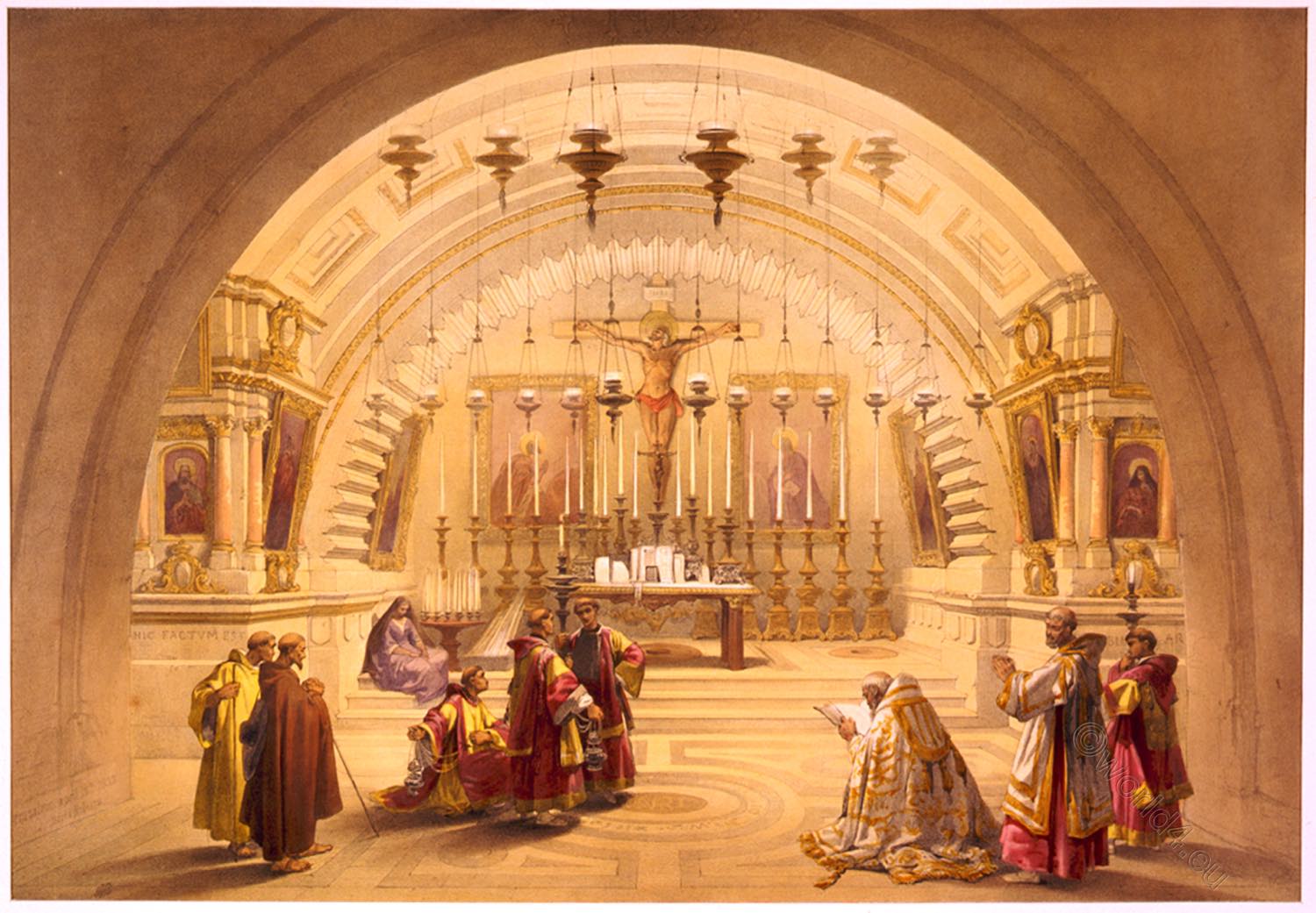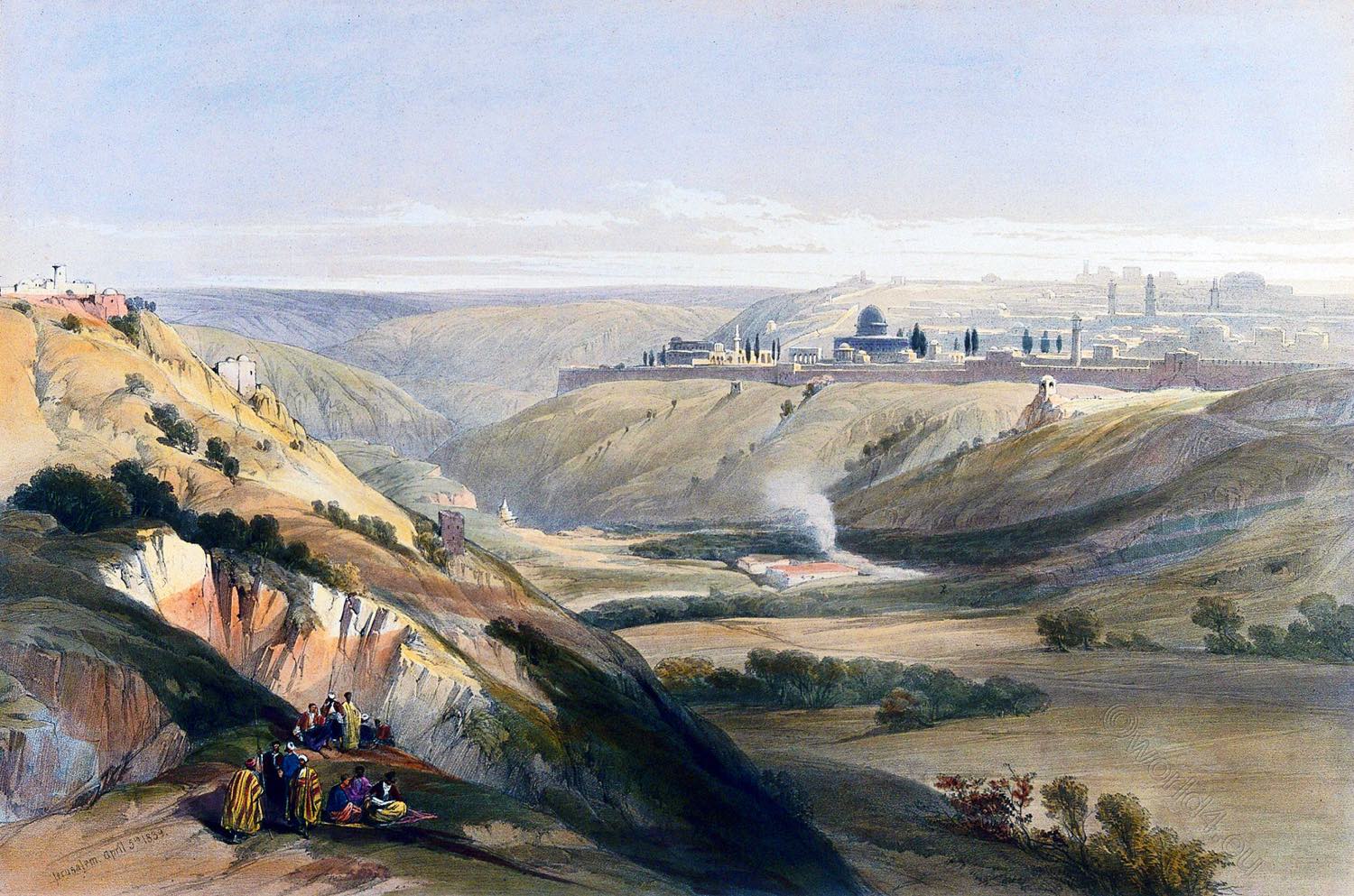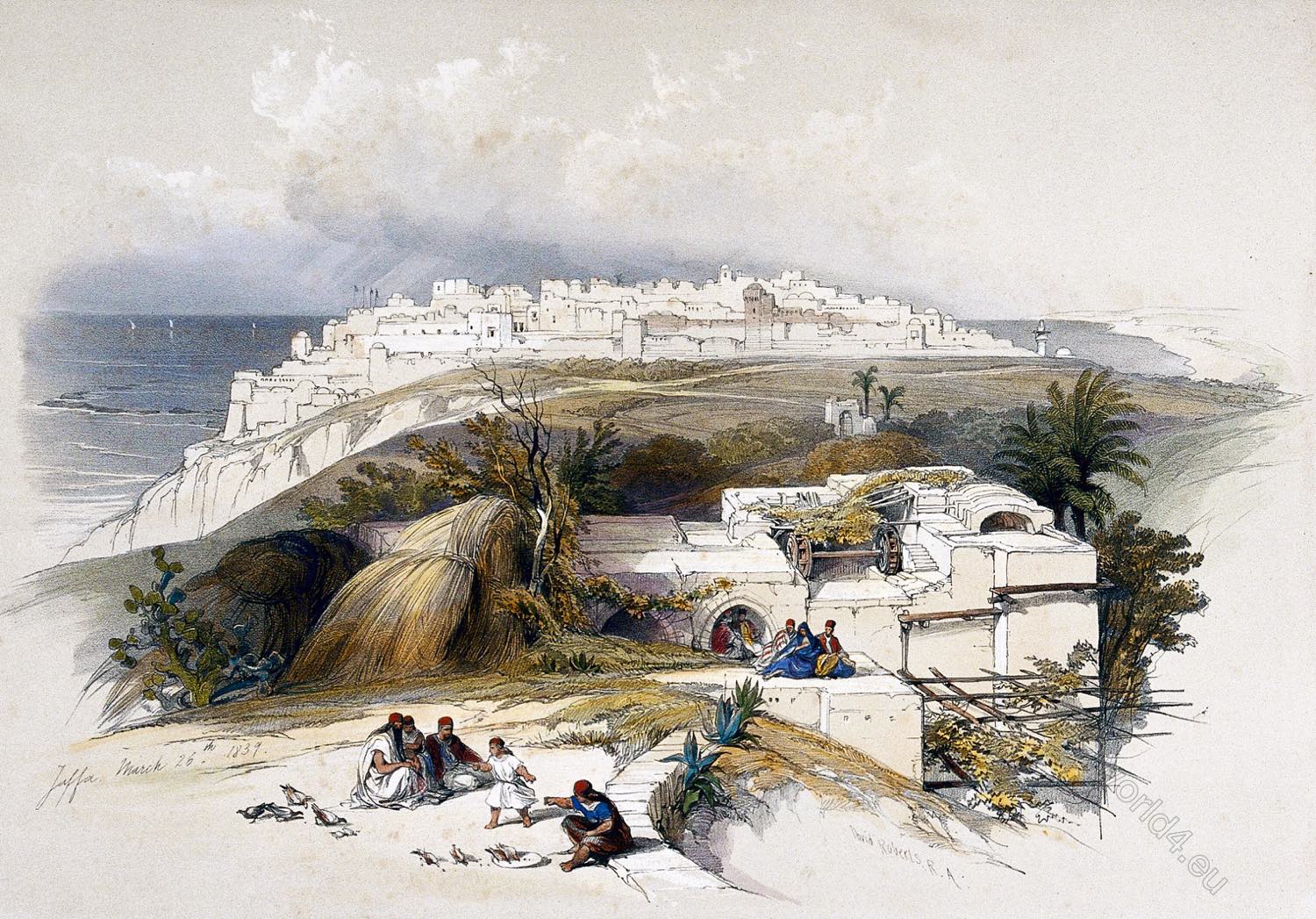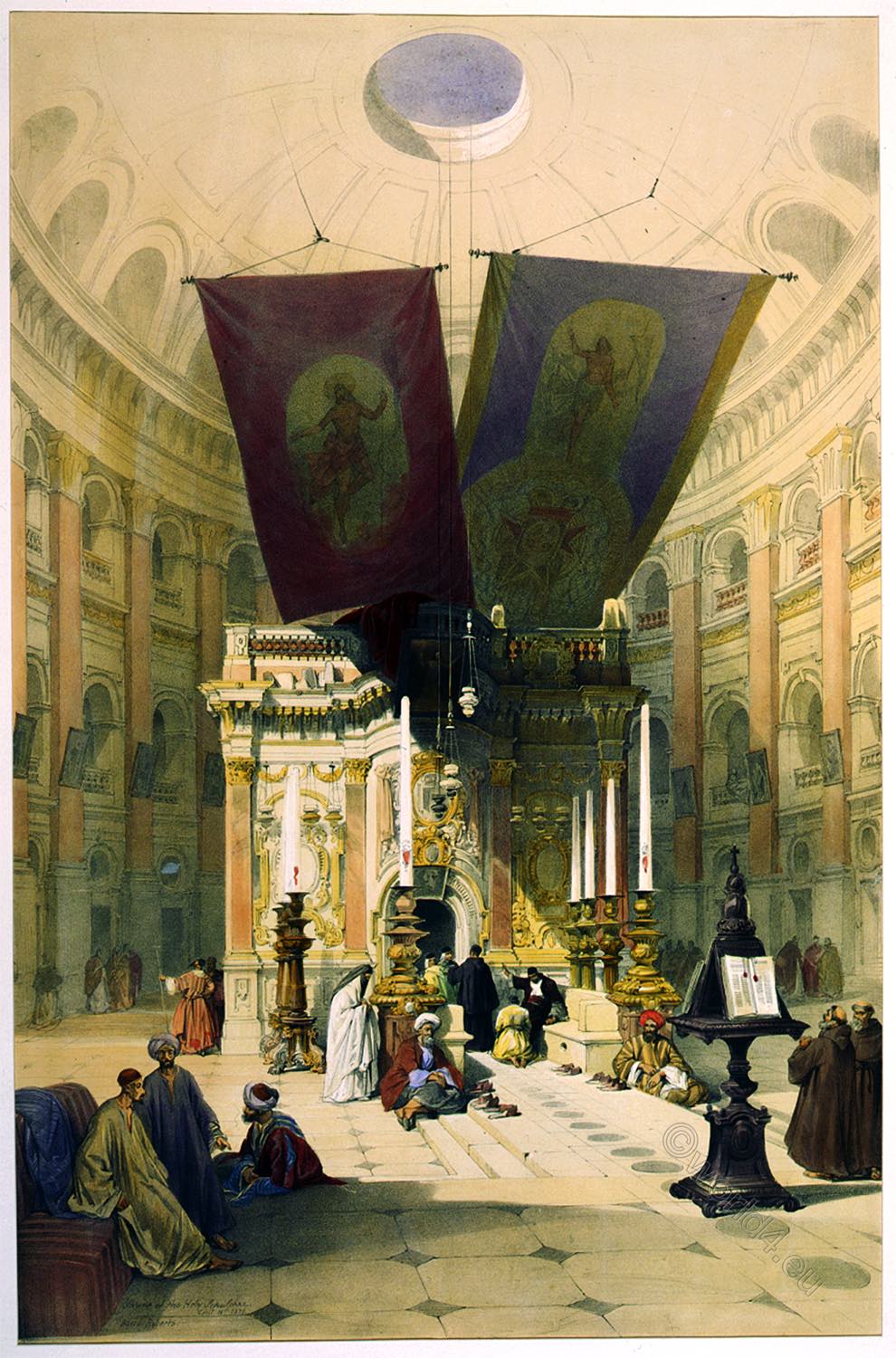
The Basilica of the Holy Sepulchre or Church of the Holy Sepulchre (in Hebrew כנסיית הקבר – Cnesiat HaChever, or “Church of the Tomb”; in Arabic: كنيسة القيامة, Kanīsat al-Qiyāma, i.e. Church of the Resurrection), also called the Church of the Resurrection (Ναός της Αναστάσεως, Naòs tis Anastàseos in Greek and Սուրբ Հարության տաճար, Surp Harut’yan tachar in Armenian by Orthodox Christians), it is one of the most important Christian churches in the world, being built on the site that tradition indicates as the site of Jesus’ crucifixion, anointing, burial and resurrection. According to Orthodox tradition, every year at midday, during the celebration of Holy Saturday of the Orthodox Easter, the ‘miracle of the Holy Fire’ is repeated there.
The church is one of the largest shrines of Christianity and is today a simultaneous church of different denominations.
Located in Jerusalem, it lies within the walls of the Old City at the end of the Via Dolorosa, and encompasses both what is believed to be “Golgotha Hill”, the site of the crucifixion, and the rock-hewn tomb where the New Testament relates that Jesus was buried. Today it is the seat of the Greek Orthodox Patriarchate of Jerusalem, which has its Katholikon, i.e. its cathedral, and its cathedra in the centre of the church.
The Church of the Holy Sepulchre is one of the main destinations for pilgrims visiting the Holy Land, along with the Basilica of the Annunciation in Nazareth and the Basilica of the Nativity in Bethlehem. However, unlike the latter, the Holy Sepulchre is the only place of which archaeological evidence exists dating back to only a hundred years after Jesus’ death.
THE SHRINE OF THE HOLY SEPULCHRE.
by David Roberts
Easter is the chief period of pilgrimages to Jerusalem, and the number of pilgrims frequently amounts to 20,000. The Church of the Holy Sepulchre is opened hut on fixed days, and on those, at this season, the pressure is enormous. The first aspect of the exterior is striking. It is a vast and splendid monument, solemn, imposing, and rich for the time at which it was erected. It is true, that it is not the Church built by the mother of Constantine; but in its rebuilding by the Christian kings of Jerusalem, the ornaments of the Byzantine architecture have been preserved, and, with those of the Greek and Eastern, form a noble and most picturesque temple.
But the multitude offer a vivid and still more picturesque scene. There are displayed costumes and countenances from all parts of the world; the splendid robes and dark visages of the Asiatic, the powerful features of the Greek, the Italian monk, the Syrian mountaineer, the Christian of India, some countenances wild and barbarian, some brilliant and civilized; some which give the impression of every sterner practice and passion of desert life; others which a Titian or a Raphael might have taken as models of the saint or martyr, calm, lofty, and intellectual : a vast congregation gathered by one powerful impulse to do homage to the most awful place of recollection on the globe.
But the gate is at last opened, generally after a delay which produces many a murmur, and the multitude, with the rush and roar of a torrent, burst in. On entering the vestibule, the keeper of the porch, a Turk, is seen sitting, frequently with a group of Turks, on his richly-covered divan, smoking, and with coffee before him. But none pause there; the crowd pass on, struggling, pressing, and clamoring. But, at the instant of their entering the grand dome, all is hushed; in front of them lies the “Stone of Unction,” the crowd fling themselves on their knees round it, weep, pray, and attempt to touch it with their foreheads; hands are seen everywhere clasped in prayer, or hiding their faces as if the object were too sacred to be gazed at; tears are rolling down cheeks, and sobs are heard that seem to come from hearts overwhelmed with reverence and sorrow.
The Church is a lofty circular building, surmounted with a dome, and surrounded by tall square pillars supporting a gallery. The general effect is bold and stately. Immediately under the dome stands the shrine, an oblong building, twenty feet long and twelve feet high, circular at the back, but square and finished with a platform in front, and with a cornice and cupola of marble. The style of this structure is fantastic and poor, the work of a nameless builder employed by the Greek monks in 1817. But who can regard such trivialities in the midst of such a scene? That building covers the Holy Sepulchre!
It is perfectly known that the site of our Lord’s tomb, of the crucifixion, and all the other leading events of his glorious Passion, have formed the topics of learned dispute. But into those discussions we have no wish to enter. The heart, and the understanding too, may rest fully contented with the fact, that whether within or without this dome, here trod our Lord; within the circuit of the city standing at this hour were wrought his miracles; were heard those lips “which spake as never man spake;” were uttered those fearful denunciations which condemned Judah to bondage; and with not less authority, those infallible and illustrious promises which declare that she shall yet break her chain, and see her King in triumph, as she saw him in humiliation. Under such feelings, all minute doubts disappear; the mind takes no interest in minor localities; all Jerusalem is one magnificent locality.
Through these streets the Savior passed; on that height he taught in the courts of the Temple; from that Mount of Olives he looked upon the golden domes, and sculptured towers, and marble walls of Jerusalem! Those facts are known beyond all doubt; those are sufficient for the heart; and fallen as the City of David is, Christendom bears in sacred memory, that “her stones were laid in holiness,” and longs for the coming of the day when a splendor, not borrowed from sun or star, shall fill her courts with new-born glory.
Source: The Holy Land, Syria, Idumea, Arabia, Egypt, & Nubia, by David Roberts, George Croly, William Brockedon. London: Lithographed, printed and published by Day & Son, lithographers to the Queen. Cate Street, Lincoln’s Inn Fields, 1855.
Continuing
Discover more from World4 Costume Culture History
Subscribe to get the latest posts sent to your email.

